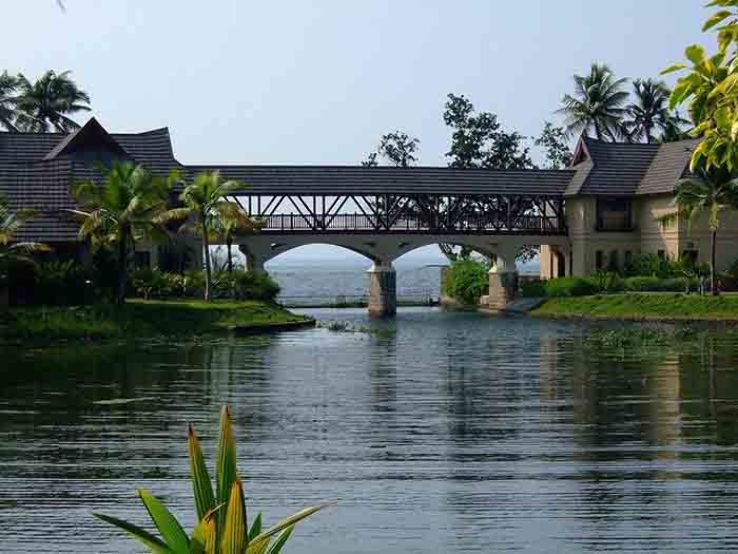Kottayam is a municipal town in the Indian state of Kerala. It is the administrative capital of Kottayam district, located in south-west Kerala. It had a population of 136,812 in the city's administrative limits according to the 2011 census.Kottayam is approximately 146 km north of Thiruvananthapuram, Kerala's capital city. It was also known as ‘Cotym’ and ‘Cottayam’ during the British Raj.
It is one of the main centres of literature and hence called Akshara Nagari or Land of Letters. Many of the first Malayalam dailies like Deepika, Malayala Manorama, Mangalam were started and are headquartered in Kottayam. During the British period, various missionaries, the Christian churches and St. Kuriakose Elias Chavara himself established many schools, colleges and other educational institutions in and around the town. Kottayam town is also known as Chuvarchithra Nagari (City of Murals). Kottayam is also known as the city of Letters , Lakes and Latex.
History
British Rule

There existed no institution in the princely state of Travancore before the 1800s. The Church Missionary Society of
England established the CMS College the first college in India. Rev.Benjamin Bailey was the first principal of the CMS
College, as it was then known, and the government of India welcomed the college as "a place of general education hence
any demands of the state for officers to fill all departments of public service would be met".
Kottayam also became a revenue division of Travancore.A fifth division, Devikulam, existed for a short period but was
later added to Kottayam. At the time of the integration of the State of Travancore and Cochin in 1949, these revenue
divisions were renamed as districts and the Diwan Peshkars gave way to District Collectors. As a result, in July 1949,
Kottayam came into being as a district.
Kottayam has an average elevation of 3 metres (9.8 ft) above sea level and is situated in the basin of the Meenachil
River and in the basin of the Vembanad backwaters, which are formed from several streams in the Western Ghats in Idukki
district. According to the division of places in Kerala based on altitudes, Kottayam is classified as being a midland
area. The general soil type is alluvial soil. The vegetation is mainly tropical evergreen and moist deciduous type.
The climate in this district is moderate and pleasant. Kottayam's proximity to the equator results in little seasonal
temperature variation, with moderate to high levels of humidity. Annual temperatures range between 20 to 35 °C
(68 to 95 °F).From June through September, the south-west monsoon brings in heavy rains, as Kottayam lies on the windward
side of the Western Ghats. From October to December, Kottayam receives light rain from the northwest monsoon. The average
annual rainfall is 3,200 millimetres (130 in).
Kottayam lies on the National Highway 183 (Old NH 220) connecting the City of Kollam and Theni. The NH183 connects
Kottayam to the state of Tamil Nadu.
Kottayam railway station is under the administration of the Southern Railway. Kottayam railway station has 3 platforms
for handling long distance and passenger trains. A railway goods shed is also situated at the station. The station is
located at Nagampadam which is at a distance of 2.5 km from Kottayam town. Kottayam lies on the busy rail route between
Thiruvananthapuram - Kollam - Ernakulam and is served by several long distance trains connecting most major cities in
the country.
The nearest airport is Cochin International Airport, 90 km to the north. Construction of an airport in Cheruvally Estate
near Erumely is proposed by the Kerala Government which is going to be the first airport in the district and nearest to
the city.
Thirunakkara Mahadeva temple was constructed in the early 16th century by the Raja of Thekkumkur. It is dedicated to Lord
Shiva and represents beautiful Kerala style of architecture. The temple is adorned with murals that depict themes of
Hindu epics.
Subrahmonia temple is situated at a distance of around 21 km in the Perunna village. It is believed that the temple was
constructed by Chithira Thirunal Balarama Varma of the Travancore kingdom. The temple has an idol of Devasenapathi, an
incarnation of Lord Murugan, along with the idols of Lord Maha Ganapathi, Lord Ayyappa and Lord Krishna. The temple is
visited during the month of Dhanu and Mahatma Gandhi is also believed to have visited this temple once.
Elaveezhapoonchira is a beautiful hill station that lies in proximity to Melukavu Mattom. It is situated in the midst of
three beautiful hillocks namely, Mankunnu, Kudayathoormala and Thonippara. The hill station derives its name from two
words ‘Elaveezha’ and ‘poonchira’, meaning a valley where leaves do not fall. Elaveezhapoonchira, which spreads over an
area of thousand acres, is a place where there are no trees or plantations. It is believed that the site was the bathing
place of Paanchali, the legendary Queen of Mahabharata.
Saraswathy temple is situated in the Panachikad village. The temple is dedicated to Goddess Saraswathy, the Goddess of
learning and art. The temple has sculptures and paintings depicting various episodes of Indian mythology. It is popularly
known as the Mookambika temple and organises the annual Vidhyarambham ceremony.
Thazhathangady Juma Masjid, also known as the Taj Juma Masjid, is located on the banks of the Meenachil River. The
foundation of the shrine was laid by the members of the Jama-Athe in 1959 and was completed in 1964.
Poonjar Palace situated in the Meenachil Taluka is surrounded by huge walls. The palace has a collection of antiques and
furniture, including chandeliers, jewel boxes, weapons, grain measurer, palm leaf engravings and statues. The sculptures
of Nataraja, a palanquin and a thoni carved out of a single piece of wood for Ayurvedic massage can also be seen in the
palace. The nearby Madurai Meenakshi temple is also visited by several tourists.
Kottathavalam is situated on the Murugan Hills at Kurisumala. It is a cave carved from a rock surface and is believed to
be the resting place of the Madurai Royal Family. Various statues and sculptures of Gods and Goddesses, such as
Madurai-Meenakshi, Ayyappa, Murugan and Kannaki, can be seen in the cave. Besides these, sculptures of weapons and arms
used during the ancient period can also be seen in the cave.
The cuisine of Kottayam is the same as rest of Kerala, but with a distinct Syrian Christian influence seen in the use of
coconut and spices, as well as beef and sea food in Kerala cuisine. But still it has a multitude of both vegetarian and
non-vegetarian dishes. Rice is the staple food eaten twice or thrice a day. Lunch dishes are generally rice with curry.
Most of the breakfast foods are made using either rice or wheat.
Margamkali and Arjuna Nritham are popular dance forms. Margamkali and martial arts such as Parichamuttukali are popular
among the Syrian Christian community. It is performed by men and women separately. In the past, it was performed during
Syrian Christian weddings. Arjuna Nritham, also known as Mayilpeeli Thookkam is a popular dance form performed by men.
Besides these, other South Indian dance forms like Bharatanatyam, Mohiniyattom, and Kuchipudi and classical Carnatic
music are also practised by a large number of young people.
A number of popular basketball tournaments including the Marian Trophy, Girideepam Trophy, Lourdes Trophy and Virginia
Memorial Tournament are conducted every year. The main sports stadia in Kottayam are Nehru Stadium and Rajiv Gandhi
Indoor Stadium. Both are located in Nagambadom.
Unnuneeli Sandesam is supposed to have been written by one of the Rajas of Vadakkumkur. In 1821, Benjamin Bailey, a
British missionary, established C.M.S. Press, the first printing press in Kerala, in Kottayam. The town has been in the
forefront of newspaper and book publishing in the state ever since.
Kottayam has played its role in all the political agitations of modern times. The 'Malayali Memorial ' agitation may be
said to have had its origin in Kottayam. The Malayali Memorial sought to secure better representation for educated
Travancoreans in the Travancore civil service against persons from outside. The Memorial, which was presented to the
Maharaja Sri Moolam Thirunal (1891) was drafted at a public meeting held in the Kottayam Public Library. The event marked
the beginning of the modern political movement in the State.The people of Kottayam also played a major role during the
Abstention Movement in the 1930s, which aimed at the representation of Hindus of the lower castes, in the Travancore
Legislature.The Vaikom Satyagraha of 1924 against untouchability, led by Mahatma Gandhi, took place in Vaikom near
Kottayam.
Post Independence
Geography and Climate
Geography
Climate
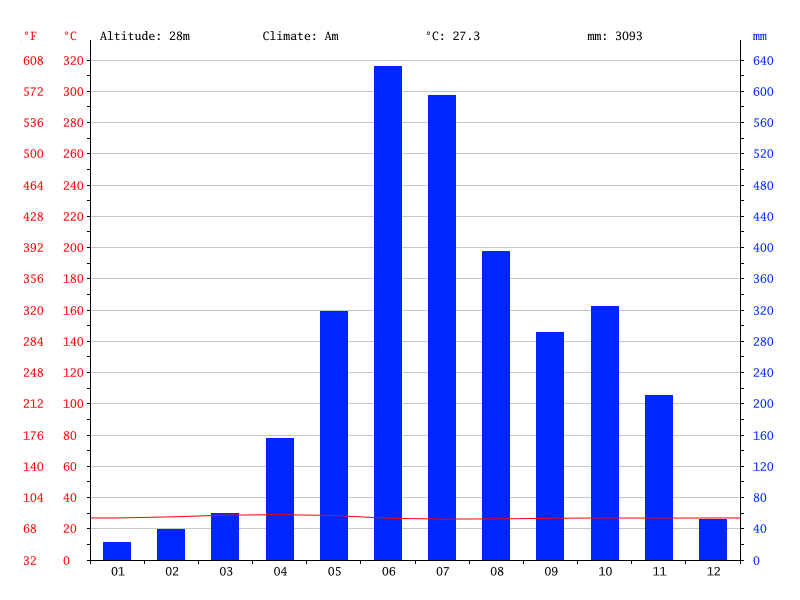
Kottayam is bordered by Pathanamthitta district on the south, Alappuzha district on the west, Ernakulam district on the
north and Idukki district on the east.
Transportation
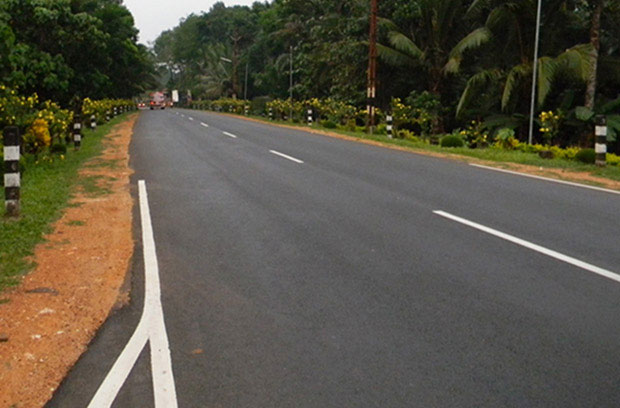 By Road
By Road
Main Central Road or MC Road or the SH1 is one of the state highways passing through the city. This highway connects
Kottayam to the north up to Angamaly. In south, it links Kottayam to Changanasserry and the remaining main cities in the
south up to Trivandrum.
SH9 or the Kottayam Kozhenchery Road is the other state highway which connects Kottayam to the Pathanamthitta district.
Seematti Round is the junction of most of the roads in the town. It is the busiest junction with 6 roads intersecting
here.
A new 4-lane road from Kodimatha to Puthuppally church along banks of Kodoor river aimed at Sabarimala and pilgrims to
Puthuppally Church allotted in municipality budget of 2017.
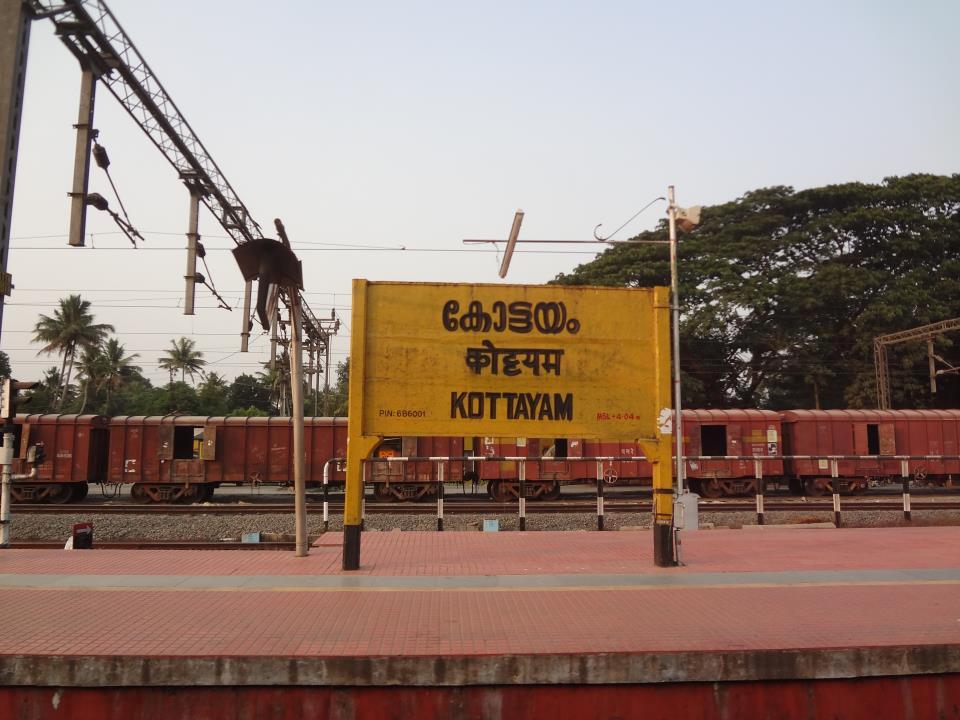 By Rail
By Rail
The Kottayam Railway station and the tracks to it lies parallel to the Cherthala railway station and its tracks.
Chingavanom railway station lies towards the south of the Kottayam town railway station and it is a major goods
station.
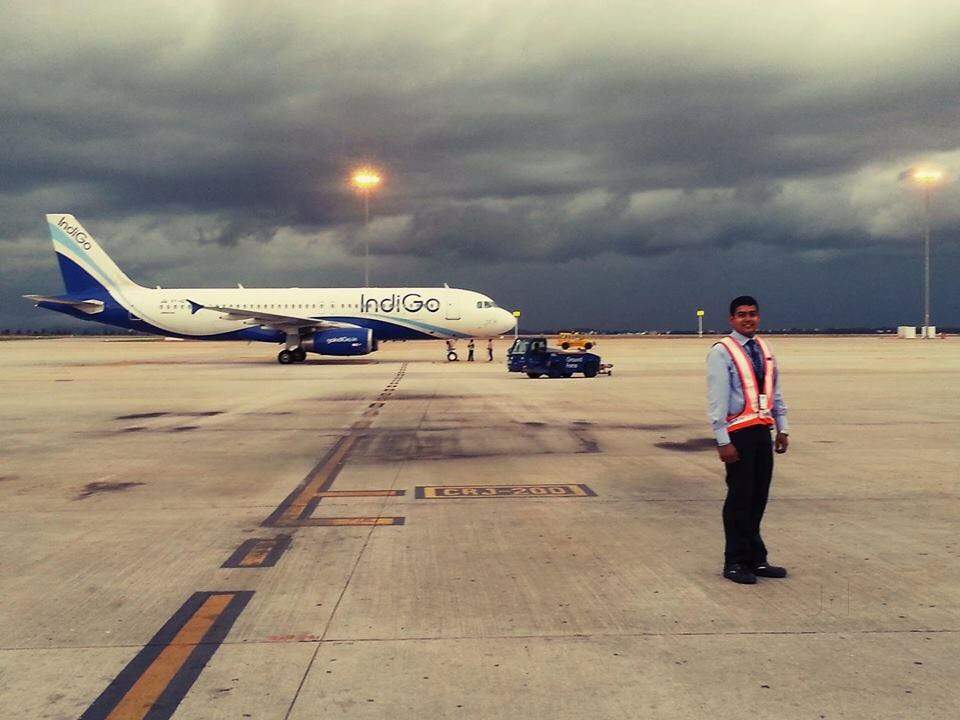 By Air
By Air
Tourists Places in Kottayam
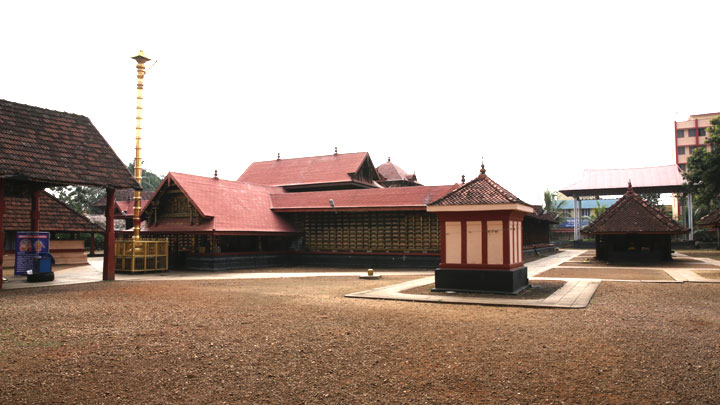
Thirunakkara Mahadeva Temple
The temple is visited by numerous tourists during the annual festival Aaraattu that lasts for 10 days. Various folk art
forms like Mayilattom, Velakali and Kathakali are performed by professional dancers at the festival. A procession is
also carried out on elephants, rendering glimpse into the traditions, customs and rituals of Kerala.
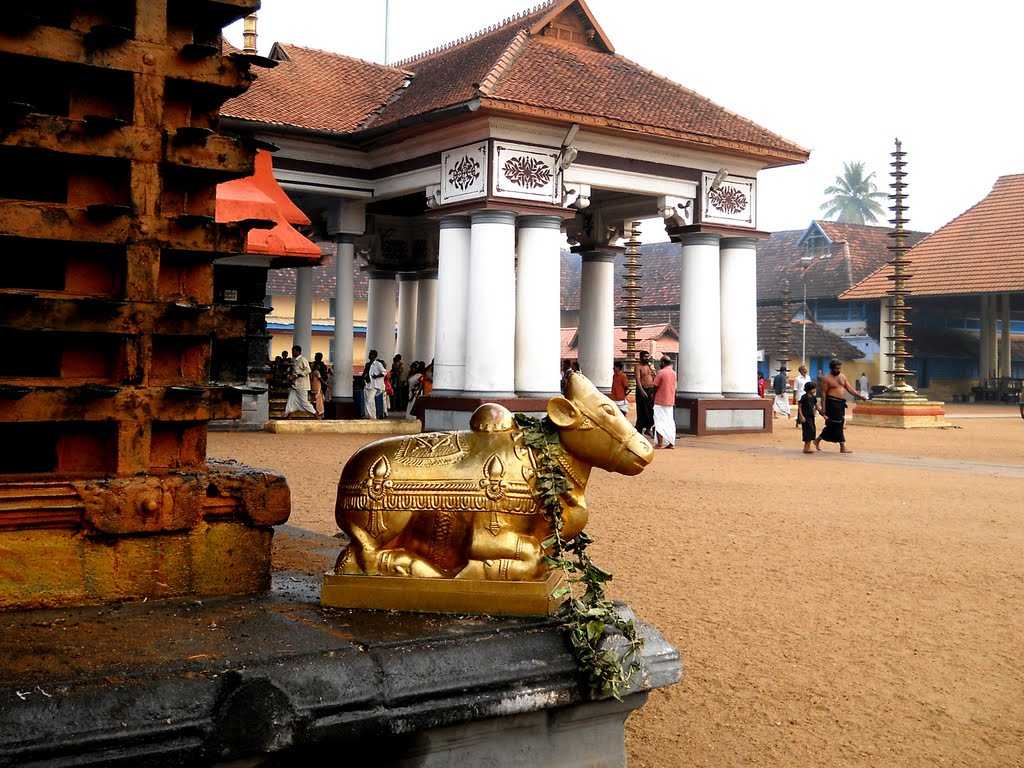
Subrahmonia Temple
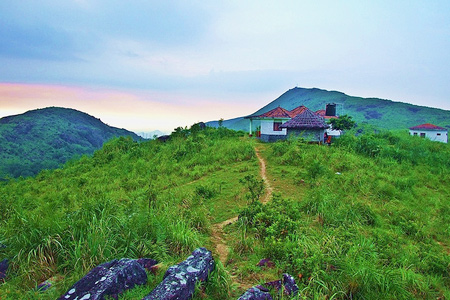
Elaveezhapoonchira

Saraswathy Temple
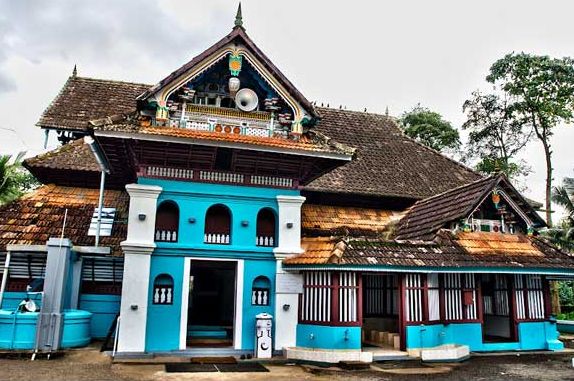
Thazhathangady Juma Masjid
Renowned for its wood carvings and beautiful architecture, the mosque was the abode of Muslims who arrived in Kottayam
from different parts of Kerala. Since 1947, the residents of the mosque follow the Hanafi tradition, under the guidance
of the Kottayam Settu Masjid.
The mosque was dedicated to the residents of the area by Haji Abdul Karim Sahib, the first President of the Jama-Athe.
It was maintained by Alhaj P. P. Ahmed Alim Sahib, who was also the Imam from 1964 to 1993.
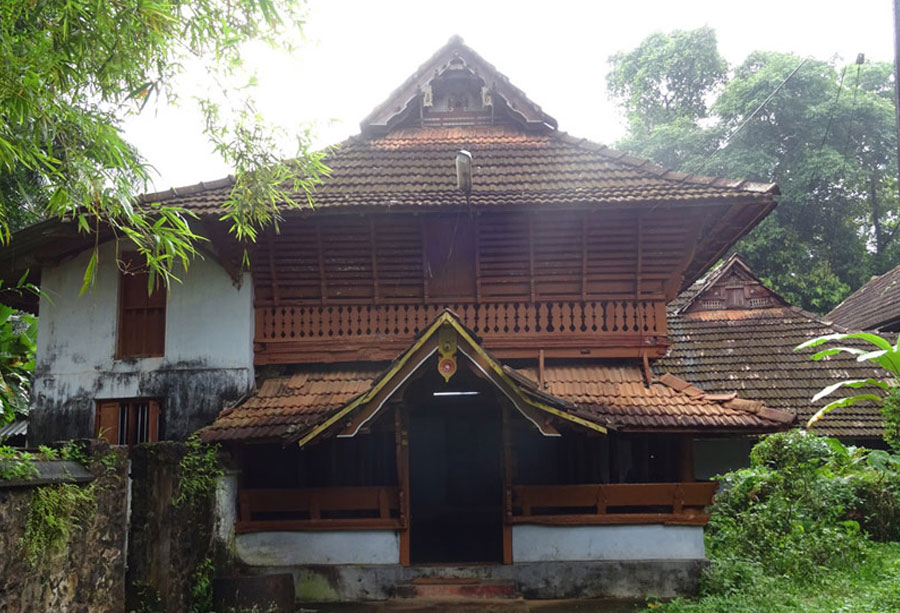
Poonjar Palace
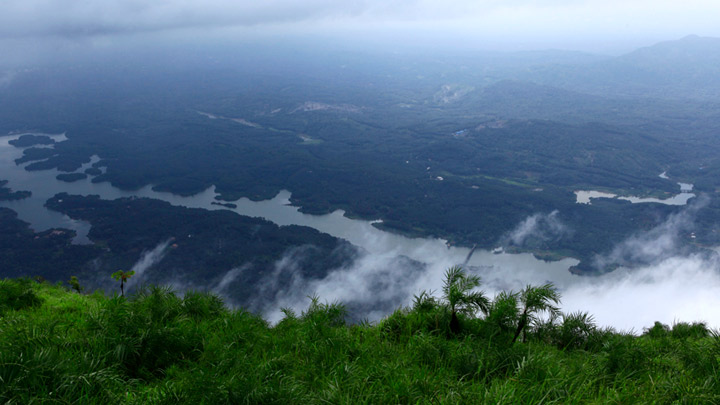
Kottathavalam Cave
Culture

Cuisine

Art
Sports
Media
In the 18th and 19th centuries, Malayalam literature was enriched by the works of Christian missionaries. Varthamana
Pusthakam (1778), written by Parammekkal Thoma Kathanar on a visit to Rome, is the first travelogue in Malayalam. The
first Malayalam English dictionary and Malayalam dictionary were published in Kottayam in the years 1846 and 1865
respectively. The first autobiography in Malayalam by Vaikom Pachu Moothathu was published in Kottayam in 1870. The first
Malayalam Bible was also published in Kottayam.
Today, seven major Malayalam newspapers – Malayala Manorama, Mathrubhoomi, Deshabhimani, Deepika, Madhyamam, Thejus and
Mangalam – and around thirty periodicals are published from Kottayam. Kottayam is also home to several book publishers in
Malayalam such as D. C. Books, Labour India Publications and Current Books. Almost 70 percent of books published in
Kerala are from Kottayam.In 1945, a group of writers set up Sahithya Pravarthaka Sahakarana Sangam, which means for
Literary Workers' Co-operative Society in Malayalam. poets.
